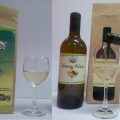The production of wine, in the collective imagination, always evokes images of bucolic landscapes, gentle hills reminiscent of the Langhe or the hills of Siena, but also glimpses of typical French countryside.
For many, wine is a symbolic drink, steeped in traditions, in knowledge handed down from generation to generation, telling stories of very ancient lands.
On the other hand, the culture of wine is a very complex affair, where the soil is mixed with the history of the civilisations that have succeeded each other in each area and that, in some way, have influenced its production.
Wine is a very ancient beverage, which probably has its roots even in Egyptian civilisations, when they used to mix honey and other aromas with grape juice to obtain a drink with a unique flavour.
From that time to the present day, processing techniques have been refined, as well as the technologies employed. The wine market can count on bottles of inestimable value, the result of years of culture and experience. At the same time, however, this drink is also experiencing renewed success in the different areas of the United Kingdom, where people are increasingly making wine at home, using more or less traditional methods.
Since this is a complex art and not within everyone’s reach, it is good to be informed, to carefully study the choice of ingredients, process, equipment and to have good reference points such as aeb-group.com/uk and other useful sites, where you can buy products online and read informative and valuable content on home wine production.
But what is actually needed for homemade wine production?
Equipment for homemade wine production
We have already mentioned that it is necessary to be equipped with the right tools. Among the essentials, which really cannot be lacking, are grapes, red or white depending on the desired result, but also glass bottles, corks and corking machines, a large container, plastic or steel, for fermentation.
To these we must then add the active dry yeasts or a fermentation starter, sieve, mostimeter, buckets and glass demijohns.
All useful tools for producing small quantities of wine for purely domestic consumption.
The steps for making wine at home
Like any other good recipe, the quality of the final result depends very much on the selection of raw materials. The choice of grapes, therefore, is an extremely important moment, requiring care and patience. In addition to colour, which depends on personal taste, it is essential to select the grapes you are going to process individually, eliminating bruised or unripe ones, as well as leaves and stems. The grapes must be of good quality, healthy and at the right point of ripeness to produce a good wine.
After selection, the grapes are then pressed, which is done with a crusher or by hand, depending on the quantity of grapes used. From this, we obtain the must, the starting point for the production of wine.
The must thus obtained is then quickly transferred to the fermenter. Already at this stage, the processing of red wine differs from that of white wine, since, in the first case, it is necessary to macerate the must with skins and seeds. In the second, on the other hand, the skins must be separated, repressed and the extracted liquid added to the previously obtained must.
The fermentation phase is certainly the most delicate, first of all because a choice must be made between waiting for it to start spontaneously, with the yeasts normally present in the must, or adding activating yeasts. In the first case, it is essential that the environment housing the must is almost completely aseptic, to prevent the organisms normally present in the container from interfering with fermentation. In the second case, on the other hand, it is essential to pay attention to the choice of dry yeasts, because the success of the wine and, above all, the aromatic characteristics of the final product depend on them.
On average, the fermentation temperature of a homemade red wine should be around 25-30°, while for a white wine even 18-21° is sufficient.
Fermentation should take place in a closed, but not hermetically sealed container.
This phase is then accompanied by pumping over, which is essential to lower the temperature of the must and oxygenate the yeasts well.
How long should fermentation last?
Fermentation by its very nature is a necessary step to transform sugars into alcohol. Therefore, from time to time it will be necessary to measure the presence of sugars in the fermented must with a measuring stick. When these are finished, in theory, the fermentation phase can also be considered finished.
This is followed by the racking phase, to separate the solid elements (the marc) from the liquid elements, i.e. the fermented must, which, at this point, will be transferred into special demijohns to continue the slow fermentation.
This ageing phase can last for several more weeks, during which time it is still essential to decant with special sieves, to continue to filter the wine, removing deposits on the bottom. Once the wine is ready, it can be transferred into bottles and hermetically corked. At this stage, some prefer to add sulphur, to prevent it from restarting fermentation and give the finished product greater stability.
From here on, the wine is ready for maturation, which can last for months or even years, provided it takes place in a dark and cool environment. The older it gets, the better it will taste and be rich in aromas, and when the time is right, all that remains is to enjoy it!






